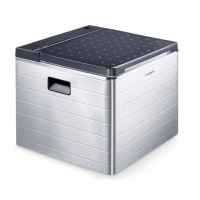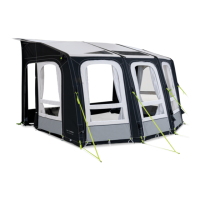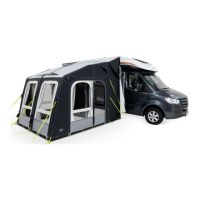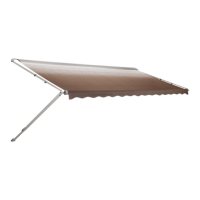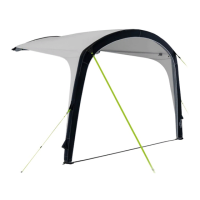devices from the battery before connecting a quick charging device.
If the cooling device is connected to a DC outlet: Disconnect the cooling device or switch it off when you turn off
the engine. Otherwise you may discharge the battery.
The cooling device is not suitable for transporting caustic materials or materials containing solvents.
The insulation of the cooling device contains flammable cyclopentane and requires special disposal
procedures. Deliver the cooling device at the end of its life-cycle to an appropriate recycling center.
Do not use electrical devices inside the cooling device unless they are recommended by the manufacturer for
the purpose.
Do not place the cooling device near naked flames or other heat sources (heaters, direct sunlight, gas ovens
etc.).
To enable the refrigerant to circulate properly, the cooler may not tilted by more than 3°. Use a spirit level to
make sure the cooler is level.
Ensure that the ventilation openings are not covered.
Do not fill the inner container with ice or fluids.
Never immerse the cooling device in water.
Protect the cooling device and cables against heat and moisture.
The cooling device shall not to be exposed to rain.
Risk of overheating!
Ensure at all times that there is sufficient ventilation on all four sides of the cooling device. Keep the ventilation
area free of any objects that could restrict the air flow to the cooling components. Do not place the cooling
device in closed compartments or areas with none or minimal air flow.
Keep the following spaces (fig. 1 ).
2.2 Safety when operating with gas
WARNING! Failure to obey these warnings could result in death or serious injury.
Explosion hazard
Only operate the device at the pressure shown on the type plate.
Only use pressure controllers with a fixed setting which comply with the national regulations.
When using gas, the device may only be used outdoors.
Risk of suffocation!
Operating the device with gas in an unventilated area will reduce the amount of oxygen in this area.
Do not operate the device in unventilated areas such as enclosed premises, tents, motor vehicles, motor
homes, caravans, ships, yachts, boots and truck cabs.
Never operate the device with gas:
– At petrol stations
– In parking garages
– On ferries
– While driving
Never place the device near flammable materials (paper, dry leaves, textiles).
Keep flammable objects away from the burner.
Never use a naked flame to check the device for leaks.
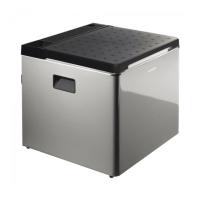
